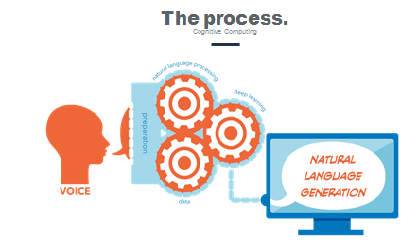There's no doubt that artificial intelligence (AI) is here and is rapidly gaining the attention of brands large and small. As I talk to customers and prospects, they are interested in understanding how AI and its subcomponents (cognitive computing, machine learning, or even deep learning) are being woven into various departments (marketing, sales, service and support) at organizations across industries.
Here are some examples of cognitive computing and machine learning today at organizations, and how these capabilities will enhance customer experience in the future.
I think it's important to start with a few foundational facts:
- AI as a practice is not new – John McCarthy and others started their research into this area back in the 1950s.
- AI and its subcomponents are rooted in predictive analytics (neural networks, data mining, natural language processing, etc., all have their beginnings here).
- Automation and the use of supervised and unsupervised algorithms are crucial to machine learning and cognitive computing use cases.
- Deep learning uses the concept of teaching and training to accomplish more advanced automation tasks. It’s important to note that deep learning is not as prevalent from a customer experience perspective as machine learning and cognitive computing. Let's take a look at what AI means for brands as the customer experience becomes the primary differentiator for marketing organizations.
A cognitive computing use case
Cognitive computing enables software to engaging in human-like interactions. Cognitive computing uses analytical processes (voice to text, natural language processing and text and sentiment analysis) to determine answers to questions.
For example, a SAS customer uses automation to provide a quicker response to service requests that come in to the brand's contact center. It can send an automated reply to service inquires, direct the customer to appropriate departments, and send customer responses back to the channel – all using SAS solutions. These capabilities reduces the number of replies that require human intervention and improves service response times. This same use case can be applied across industries such as retail, telecom, financial services and utilities. The end result? A happier customer and an improved customer experience.
Analytics: the core of machine learning
Machine learning uses software that can scan data to identify patterns and predict future results with minimal human intervention.
Analytics play an important role. Model retraining, the use of historical data and environmental conditions all serve as inputs into the supervised and unsupervised algorithms that machine learning uses. For example, some of our large telecom and financial services providers use data, customer journey maps and past patterns to be able to serve timely and relevant offers during customer interactions.
Many of our customers can do in less than one second, and are providing response and replies that are relevant and individualized. Another great example of machine learning is the development work that SAS is doing currently with regard to its marketing software.
Our customer intelligence solutions use embedded machine learning processes to make setting up activities and completing tasks in the software easier for analysts and marketers alike. For instance, the software will automatically choose the optimal customer segment and creative combinations for a campaign. It will also recommend the best time to follow up with a customer or segment and on the customer’s preferred devices. Machine learning also gives marketers the ability to understand how to use and modify digital assets for the most reach and optimal conversions.
The newest addition to artificial intelligence
Deep learning, a newer concept that relies on deep neural networks – is certainly something that is coming to the marketing and service realms. Many companies have started looking at how we teach and train software to accomplish complex activities – drive cars, play chess, make art (the list goes on). As for marketing, I believe we will see deep learning being used to run marketing programs, initiate customer service interactions or map customer journeys in detail.
These are just a few examples of how we are seeing AI improve the customer experience. You and I, as digitally empowered consumers, will certainly benefit from man and machine working together to automate the interactions that we have with brands on a daily basis. I urge you to keep an eye out for how brands big and small are automating the interactions they have with you – I think you will be pleasantly surprised with the outcome.



2 Comments
Pingback: Why benchmarking is necessary for marketers on the data-driven journey - Hidden Insights
Pingback: FutureAnalytics: Cognitive computing in IoT deployments - Hidden Insights